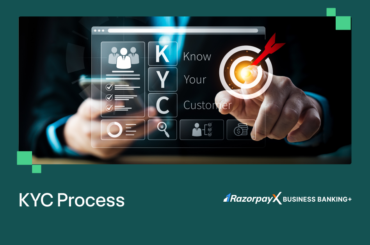Table of Contents
What is Strategic Cost Management?
Strategic cost management is the process of controlling and reducing business costs in a planned, well-informed manner. Managing costs is a very important part of business financial management. Uninformed, hasty cost-cutting can have a significant detrimental impact on the business.
With strategic cost management, businesses use insights from financial and non-financial data to improve profitability, optimize resource allocation, and gain a competitive edge. This blog is a comprehensive guide on how to go about strategically managing a business’s expenses.
Techniques of Strategic Cost Management
Financial analysts use a number of techniques to come up with a cost management strategy:
1. Activity-Based Costing (ABC):
Traditional costing methods allocate overhead costs to products or services based on a single factor, like direct labour hours. ABC challenges this by identifying specific activities that drive costs. It assigns overhead costs to these activities and then links them to products or services based on their actual consumption of those activities. This provides a more accurate picture of product profitability and helps businesses identify areas for cost reduction.
2. Target Costing (TC):
TC works backwards from the desired selling price of a product or service. It subtracts the desired profit margin to arrive at the target cost, which is the maximum acceptable cost to produce the product and still achieve profitability. Companies then identify ways to reduce costs or improve efficiencies to meet the target cost. This approach focuses on cost control throughout the product development and manufacturing process.
3. Total Quality Management (TQM):
TQM is a philosophy that emphasizes continuous improvement in all aspects of a business. It focuses on preventing defects, reducing waste, and improving customer satisfaction. TQM principles are applied throughout the organization, from product design and development to manufacturing and customer service. By focusing on quality, TQM can ultimately lead to cost savings by reducing rework, warranty claims, and customer dissatisfaction.
4. Benchmarking:
Benchmarking involves comparing your company’s processes and performance metrics against industry leaders or best-in-class companies. This allows you to identify areas where you can improve your efficiency and cost-effectiveness. Benchmarking can be internal (comparing different departments or processes within your company) or external (comparing against competitors or industry leaders).
5. Business Process Reengineering (BPR):
BPR is a radical approach to process improvement. It involves fundamentally rethinking and redesigning how work is done within an organization. The goal is to eliminate non-value-added activities, streamline processes, and improve efficiency. BPR can be a complex and disruptive undertaking, but it can lead to significant cost savings and improved performance.
6. Just-in-Time (JIT) Inventory Control System:
JIT aims to minimize the amount of inventory a company holds. The goal is to receive materials only when they are needed for production, reducing storage costs, waste due to obsolescence, and overall inventory carrying costs. JIT requires close collaboration with suppliers and precise production planning to ensure materials arrive just in time for production.
7. Balanced Scorecard (BSC):
The BSC is a performance management tool that goes beyond traditional financial metrics. It considers four key perspectives – financial, customer, internal processes, and learning and growth – to provide a more comprehensive view of a company’s performance. This helps businesses track progress towards strategic goals and ensure that cost management efforts are aligned with overall business objectives.
8. Kaizen Costing:
Kaizen costing is a continuous improvement approach to cost management that originates from Japan. It focuses on making small, incremental improvements to processes on an ongoing basis. The idea is that companies can achieve significant savings over time by constantly looking for ways to save costs, even in small amounts. Kaizen costing often involves employee participation in identifying and implementing cost-saving ideas.
By understanding and implementing these cost management techniques, businesses can better understand their cost drivers, optimize resource allocation, and achieve long-term financial sustainability.
Example of Strategic Cost Management
Innovate Software is a mid-sized IT services company in India offering software development, application maintenance, and cloud computing solutions.
Innovate Software faces pressure from both global IT giants and smaller, agile startups. They need to optimize costs to compete effectively on price while maintaining their talent pool and service quality.
Read more: Procurement Software
The first step for Innovate Software is to identify the key spending areas of the business. These may include:
- Employee costs like salary, benefits, and training expenses. It also includes the cost of high employee turnover. These expenses usually make up the bulk of the business spending.
- Infrastructure costs include the rent paid for the office, maintaining the data centres, and getting software licenses.
- Vendor management costs like contract fees, invoice management, and late fees.
The next step is to identify the functions that directly impact the core of the business. Innovate Software, for example, heavily relies on high-quality internet and expensive hardware for efficiency.
If the business decides to cut costs by switching to a cheaper hardware or software provider, it will impact employee productivity and profitability.
Where can Innovate Software cut costs?
Non-essential business functions like the cost of office supplies like notebooks, pens, desks, etc. Counterintuitively, sometimes spending money on certain functions like employee experience can help reduce the high costs of employee turnover.
Tips for Strategic Cost Management
Here are some helpful tips for implementing a strategic cost management strategy:
Planning and Analysis:
- Set Clear Objectives: Clearly define your cost management goals. Are you aiming for overall cost reduction, optimizing resource allocation for specific projects, or achieving cost leadership in a particular market segment?
- Identify Cost Drivers: Dive deep to understand the root causes of your costs. Analyze various factors like material prices, labor costs, production inefficiencies, or even administrative overhead.
- Cost-Benefit Analysis: When considering cost-cutting measures, evaluate the potential benefits and drawbacks. Don’t sacrifice quality or essential features in the pursuit of short-term cost reduction.
Action and Implementation
- Prioritize Cost-Saving Opportunities: Not all cost-cutting ideas are created equal. Focus on areas with the biggest potential impact while considering ease of implementation and potential disruption.
- Process Improvement Initiatives: Look for ways to streamline processes, eliminate waste, and improve operational efficiency. This could involve automation, implementing lean manufacturing principles, or redesigning workflows.
- Renegotiate with Suppliers: Establishing strong relationships with suppliers can lead to better pricing and terms. Regularly review contracts and negotiate for more favorable rates.
Communication and Measurement
- Communicate the Strategy: Ensure everyone in the organization understands the importance of cost management and their role in achieving cost-saving goals.
- Develop a Measurement Framework: Establish key performance indicators (KPIs) to track progress and measure the effectiveness of your cost management initiatives. Examples of KPIs could be cost per unit produced, inventory turnover ratio, or administrative expense as a percentage of revenue.
- Monitor and Adapt: Regularly monitor your cost performance and adapt your strategy as needed. Be prepared to adjust your approach based on changing market conditions, new cost drivers, or unforeseen circumstances.
Additional Tips
- Foster a Culture of Cost Awareness: Encourage a company culture where everyone is mindful of costs and empowered to suggest cost-saving ideas.
- Benchmarking: Regularly benchmark your cost performance against industry leaders to identify areas for improvement and stay competitive.
- Invest in Technology: Digital-first financial suites like RazorpayX’s Payroll, Source to Pay and Business Banking+ tools help streamline processes and gain valuable insights into spends.
FAQs
What are the 4 techniques of cost management?
Here are 4 popular cost management techniques: 1. Activity-Based Costing (ABC): Identifies specific activities that drive costs, providing a more accurate view of product profitability and guiding cost reduction efforts. 2. Target Costing (TC): Works backwards from a desired selling price to determine the maximum acceptable cost for production, ensuring profitability while managing expenses throughout the process. 3. Benchmarking: Compares your company's performance against industry leaders to identify areas for improvement and achieve greater cost-effectiveness. 4. Just-in-Time (JIT) Inventory Control: Minimizes inventory holding by receiving materials only when needed for production, reducing storage costs and waste.
What are the factors affecting strategic cost management?
Strategic cost management is influenced by both internal and external factors. Internally, the **company structure, size, and life cycle stage** can impact cost drivers and **resource allocation**. Externally, factors like **industry competition, market fluctuations, and technological advancements** can influence cost pressures and require adaptation of cost management strategies.
What are the objectives of strategic cost management?
Strategic cost management has several key objectives. It aims to: 1. Reduce costs while maintaining quality and customer satisfaction. 2. Optimize resource allocation by focusing spending on activities that deliver the most value. 3. Gain a competitive advantage by offering competitive pricing or superior products/services through effective cost control. 4. Improve profitability through a combination of cost reduction and revenue growth strategies.





